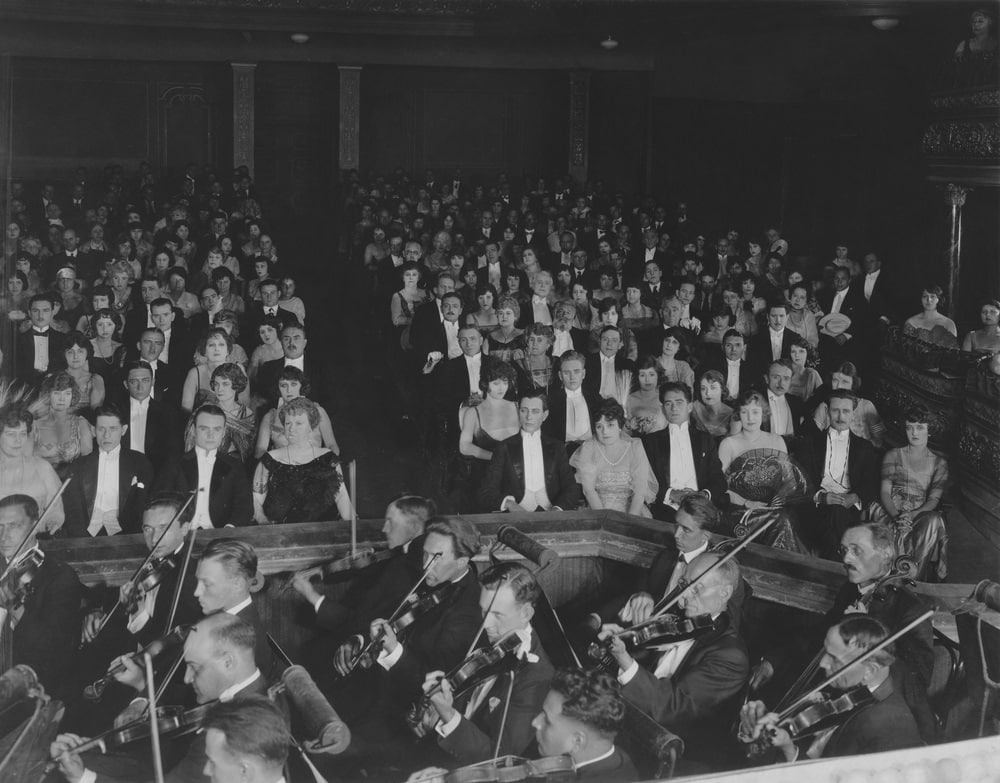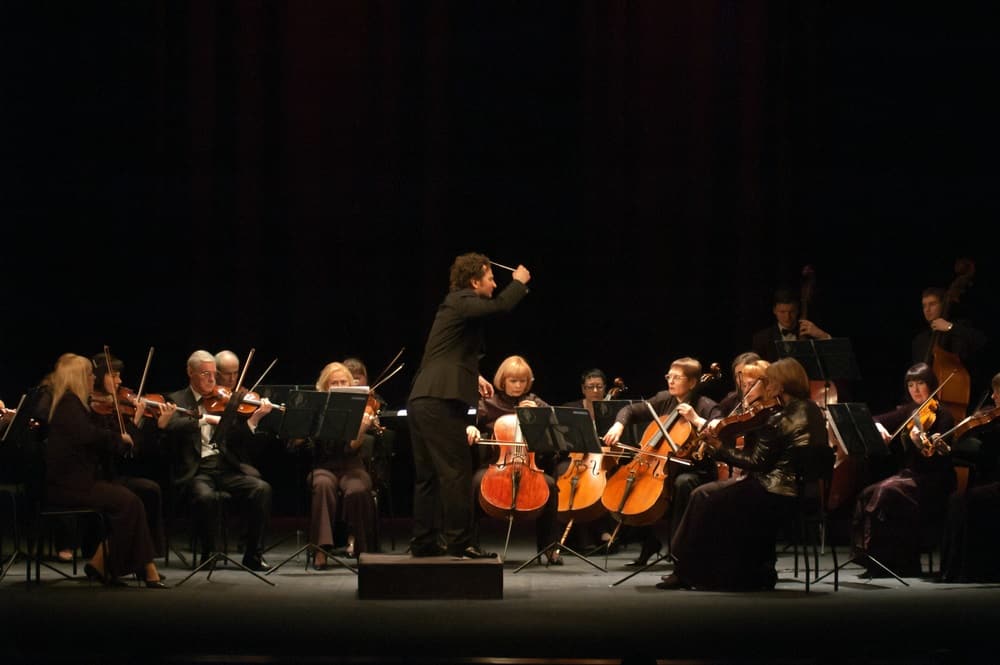It’s maybe an odd thought to consider that once there were no orchestras. That fabulous collection of a hundred or more hard-working musicians ready to perform a symphony or concerto, not existing. The power and glory of the contemporary orchestra is a fairly recent musical development.
Whilst the orchestra did not feature in musical life until the Baroque period, that is not to say that groups or ensembles of musicians did not occur. During the Renaissance period, the term often used for a larger group of musicians would be a consort. Composers of the time would commonly be much freer in their approach to which instruments played their music, often leaving the choices to the available performers.
From Consort To Orchestra
Italian composer Claudio Monteverdi made some significant changes to how he organized his consorts. Monteverdi grouped his instrumentalists in a similar way to the way an orchestra is grouped today. This reshaped the idea of a consort into a more coherent and established set of musical instruments.
To some extent, this was Monteverdi making a strong attempt to organize his consorts in a way that best accompanied his operas. In writing for specific instrumental combinations Monteverdi took the first steps towards the modern orchestra. His 1607 opera Orfeo is a good example of this.
The Baroque Period: The Birth of Orchestral Music
As we edge into the Baroque Era we find dramatic changes to the old consorts. The organization of larger groups of musicians is now far more common amongst the courts of Europe. It’s worth remembering that thanks to some major developments in instruments during the Renaissance, ensembles such as the orchestra were able to come to life.
One such innovation was the violin which replaced the viol. This was a huge leap forward in terms of instrumental potential given the rich sonority, range, and expressive nature of the violin. It was with the string sections that the orchestra began truly to take shape.
Early Baroque orchestras would have varied considerably in instrumental combinations. It would depend on who was available, how much they were going to be paid, and which composer required their services. The nobility of the time began to remove themselves more frequently from city life into established residencies that they fully controlled.
Often it was within these bastions of power that court composers found themselves with musicians on tap. JS Bach, according to various sources, would have probably been able to employ around 18 players whereas A Corelli’s Rome-based orchestra allegedly ranged from thirty to an impressive 150 performers.
The Baroque orchestra, as a standard model can be derived, would have consisted of, a body of string players including violin, viola, and cello, plus a continuo. This would have been the bedrock of the Baroque orchestra. Composers of influence, such as Jean Baptiste Lully introduced additional instruments such as the upgraded hautbois or oboe and the transverse flute. Both of these would have brought greater textural and timbral nuance to the evolving orchestra.
The Influence of Handel
Handel’s Messiah is often performed with monumentally extravagant forces. Whilst this can lead to performances of extraordinary impact and beauty, it is not what the composer originally intended. Handel typically would have had an orchestra of between 20 – 30 players plus soloists and chorus.
Given the notoriety of Handel and his immense influence during the Baroque period, this may come as a surprise. Other lesser composers are unlikely to have had the luxury of these numbers in their orchestras.
The Influence of Vivaldi
Vivaldi worked as a composer and teacher at the Ospedale della Pietà for most of his adult life. Contrary to the name of Vivaldi’s residence, this was not a hospital but a fee-paying school set up for the daughters of wealthy merchants. These young women received tuition from Antonio Vivaldi and were the beneficiaries of many of his compositions.
Many of these compositions are orientated around a string orchestra plus continuo. As a student of A Corelli Vivaldi would have been familiar with the brilliant Concerto Grosso Corelli had written and also how he arranged his musicians. This paved the way for much of Vivaldi’s output as well as setting a trend for the future of music and the orchestra.
More Growth Towards An Orchestra Setting
As Baroque composers’ ambitions grew, then so did the nature of the orchestras they wrote music for. In tandem, this led to the development of existing and new instruments that gradually found their seats within the orchestral setting.
Concertos increasingly offered instrumentalists the opportunity to demonstrate their technical and expressive fluencies with many of Vivaldi’s concertos composed exactly for that purpose. This in turn gave the orchestra a further purpose as both accompanist and provocateur in the new concertos giving increasing importance to the orchestra.
Towards the close of the Baroque era, the orchestra was fully recognizable in a form close to today’s groupings. Violins were divided into first and second sections to the left, in front of the orchestra with violas centrally placed, and cellos and double basses towards the front right.
The woodwind section including flutes and oboes, possibly with the addition of bassoons, became a regular feature of the late-Baroque orchestra. Equally, brass instruments would have been natural horns and trumpets with a modest percussion section to the rear of the orchestra. Early versions of timpani were commonly employed in the orchestra.
Moving Into The Classical Period
As the orchestra moves into the Classical Period, the orchestra is a fully established feature. Still relatively small in terms of players, around 40, the orchestra in the 18th Century played a central role in the lives of contemporary composers. The concerto, as a musical form, flourishes during this period, as does the symphony, pioneered by composers like Joseph Haydn and WA Mozart.
Additional instruments like the clarinet become important members of the evolving orchestra alongside additional brass and percussion. Timpani was particularly popular alongside side drums and later suspended cymbals.
The Orchestra We Recognize Today
By the time the 19th Century dawned, the orchestra had grown in size and instrumentation that we recognize today. The string section can number nearly eighty performers alone with triple woodwind, a large brass section, and a formidable battery of percussion instruments.
The expectations of Romantic composers push the limits musically and instrumentally, perhaps culminating in works like Gustav Mahler’s Symphony for Thousand (Mahler’s Symphony No. 8).
The sheer scale of some pieces and the dimensions of the Romantic orchestra would probably be overwhelming to composers from the Baroque period who may never have dreamed that what they had begun would evolve in this way.


